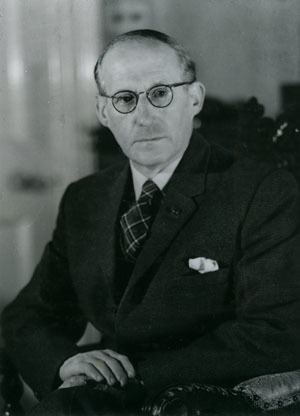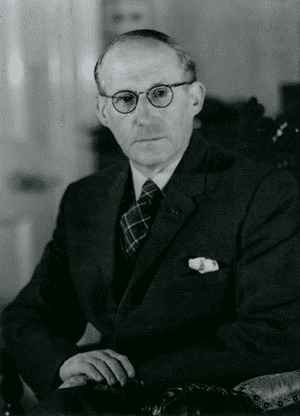Name Robert Gayre Died February 10, 1996, Argyll | ||
 | ||
Books Brewing Mead: Wassail! in Mazers of Mead : the Intriguing History of the Beverage of Kings and Easy, Step-by-step Instructions for Brewing it at Home | ||
George Robert Gayre of Gayre and Nigg (6 August 1907 – 10 February 1996) was a Scottish anthropologist who founded Mankind Quarterly, a peer-reviewed academic journal which has been described as a "cornerstone of the scientific racism establishment". An expert on heraldry, he also founded The Armorial, and produced many books on this subject.
Contents
- Education and military service
- Heraldry
- Mankind Quarterly and publications on race
- Titles styles and controversies
- Nazi ties
- Publications on ancient Zimbabwe
- References

Education and military service
Gayre was born as Robert Gair on 6 August 1907 in Dublin to William Gillies Gair and Mary O'Connor. He earned an MA from University of Edinburgh, then studied at Exeter College, Oxford.
Gayre served with the British Expeditionary Force in France in 1939, as a Lieutenant-Colonel in the Royal Artillery afterwards becoming Educational Adviser to the Allied Military Government of Italy, based in Palermo, where he fought for the exclusion of left-wing text-books and communist influence from the Italian education system. He was thereafter Director of Education to the Allied Control Commission for Italy, based in Naples; and Chief of Education and Religious Affairs, German Planning Unit, Supreme Headquarters Allied Expeditionary Force. After the war he spent a considerable amount of time in India where he was instrumental in the establishment of the Italo-Indian Institute.
Heraldry
Both Gayre and Sir Thomas Innes of Learney were authors of books on heraldry. As Chief of Clan Gayre, Gayre appended "of Gayre and Nigg" becoming Grand Almoner, and Hereditary Commander of Lochore, of the Order of Saint Lazarus (statuted 1910).
His 1959 book Heraldic Standards and Other Ensigns: Their development and history is considered an important work on the subject, and he contributed on the topic to Encyclopædia Britannica.
Mankind Quarterly and publications on race
Gayre was one of the founders and an editor of Mankind Quarterly from 1960 to 1978, and was honorary editor-in-chief thereafter.
The magazine has been called a "cornerstone of the scientific racism establishment" and a "white supremacist journal", "scientific racism's keepers of the flame", a journal with a "racist orientation" and an "infamous racist journal", and "journal of 'scientific racism'".
In 1968 he testified on behalf of members of the Racial Preservation Society who were charged under the Race Relations Act for publishing racialist material. They prevailed in their defence. In his evidence to the court Gayre described blacks as being "feckless" and he maintained that scientific evidence showed that blacks "prefer their leisure to the dynamism which the white and yellow races show."
Titles, styles and controversies
Previous generations of Gayre's paternal line of ancestors all used the spelling "Gair" as far back as the 17th century. Gayre's university degree in the mid-1920s was likewise issued with the "Gair" spelling, but he began spelling it "Gayre" at least as early as 1943. In 1957, after the death of his father, he legally changed his surname to "Gayre of Gayre and Nigg", a title that had never before been used.
Gayre claimed to be the Chief of "Clan Gayre" and "Clan Gayre and Nigg". In 1947, he wrote a book titled Gayre's Booke: Being a History of the Family of Gayre in which he presented an ancestry that supposedly established his claim to be the chieftain of the Clan of Gayre; however no clan or sept by that name is mentioned in any record prior to Gayre's use of it in the second quarter of the 20th century. World Orders of Knighthood and Merit by Guy Stair Sainty (published by Burke's Peerage) refers to Gayre as "...the late Robert Gayre (first Chief of the newly formed Clan Gayre)...". The Glasgow Herald Newspaper, on 14 June 1975, wrote "Robert Gayre, of Gayre and Nigg, is singular among genealogists, dynasts and the like, if only for the reason that, alone among them, he has been able to create a Scottish clan from scratch, providing it with traditions, rituals, precedences and privileges..."
In 1967 Gayre established a Commandery of the Order of St Lazarus. In 1971 he bought St Vincent’s Church. It became its collegiate church, the seat of the Commandery of Lochore. It was the first church to have been acquired by the Order of St Lazarus since the reformation. Gayre also claimed to be "Baron of Lochoreshire". This was not a title that Gayre inherited or was bestowed but rather one that he assumed after he purchased the seat of the feudal Barony of Lochore. Nor was the feudal Barony ever previously described as "Lochoreshire"; it was always the "Barony of Lochore", which was located within an area that was known in medieval times as Lochoreshire. Other titles and honours that he said he had include being Chamberlain to the Prince of Lippe (a prominent member of the Order of Saint Lazarus), Knight of the Sacred Military Constantinian Order of Saint George of Naples, Knight Commander of the Cross of Merit (Military Division) of the Sovereign Military Order of Malta, Knight Commander of the House Order of Lippe, Knight Grand Cross with Collar of the Military and Hospitaller Order of St. Lazarus of Jerusalem and Knight Grand Officer of the Order of the Crown of Italy.
In the early 1960s, Gayre was appointed "Commissioner-General of the English Tongue" of the Order of Saint Lazarus (statuted 1910), one of the many neo-chivalrous self-styled orders that arose in the early-20th century.
In 1964, Gayre formed the International Commission on Orders of Chivalry (ICOC), an ostensibly academic but non-authoritative panel whose purpose was to review and approve of or reject claimed Orders of Chivalry. The Commission originally included many holders of legitimate titles and honours, but when it became evident that Gayre intended to bolster the legitimacy of the Order of St. Lazarus through the Commission's published Register, a number of the original members resigned in protest. The ICOC continued to act as a vehicle for promoting the cause of establishing the Order of St. Lazarus' legitimacy until Gayre's death in 1996. In this, he was assisted by his friend, protege, fellow member of the Order of St. Lazarus, and Vice-President of the ICOC, Terence MacCarthy.
Nazi ties
In 1944 Gayre wrote Teuton and Slav on the Polish frontier:a diagnosis of the racial basis of the Germano-Polish borderlands, with suggestions for the settlement of German and Slav claims using photos by the Nazi Hans F. K. Günther and refers several times to "Professor Hans F.K. Günther's authoritative work on German racial science". Like Günther, he was a leading member of the post-war Neo-Nazi Northern League and according to Joseph L. Graves and others had close ties to other neo-Nazi organisations. Graves and William H. Tucker state that Gayre considered himself a Strasserist, an ideology "which emphasized the 'socialism' in National Socialism, rejecting both communism and capitalism as Jewish-dominated systems that had to be overthrown in favour of an approach based on white racial solidarity." He denied any links between Nazism and Mankind Quarterly while lamenting the identification by most of the word "Nazi" with "Hitlerian Nazi".
Publications on ancient Zimbabwe
Gayre wrote some articles and a book proposing a Semitic origin for Great Zimbabwe, maintaining that the Lemba are descended through their male line from the creators of the original Zimbabwean civilisation, and citing evidence including burial and circumcision practices. He suggested that the Shona artefacts which were found at Great Zimbabwe and in numerous other stone ruins nearby, were placed there only after they conquered the country and drove out or absorbed the previous inhabitants; he added that the ones who remained would probably have passed some of their skills and knowledge to the invaders.
According to Gayre, the agricultural terracing and irrigation channels in the Nyanga District of northeast of Zimbabwe was a product of the same ancient civilisation – as too were the hundreds of ancient gold mines in the country.
Most archaeologists disagree with Gayre's interpretation and conclusions: they maintain that Great Zimbabwe was constructed by ancestors of the Shona, as were the terraces, furrows and settlements of ancient Nyanga. – although his positions have been supported in a 2012 article in Mankind Quarterly.
